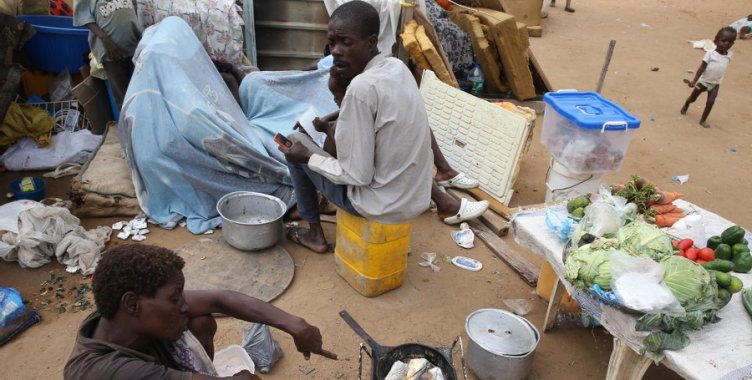"It is expected that up to 1.5 million people or five percent of the population will face high levels of acute food insecurity" in 2024, highlights the report prepared by a network of 16 agencies, including the United Nations Food Organization and Agriculture (FAO), the United Nations World Food Program (WFP) and the European Union.
Data for 2023 are not directly comparable with those for 2022, due to a change in the methodology for Angola, the report highlights.
The increase in high levels of acute food insecurity in 2024 is estimated from the peak recorded in 2023 and "reflects the expectation of low rainfall during the 2023/24 harvest season, low household food reserves and persistent food inflation and fuels", highlights the report.
The combined effects of consecutive years of dry weather conditions, including during the 2022/23 season, "have significantly reduced agricultural production, which is the main source of food for rural families in the southwest" of Angola, where the provinces of Cunene, Huíla and Namibe were classified in Crisis (FAO's third highest level) in 2023.
If the southeastern areas of the country recorded precipitation deficits during the last months of 2023, related to the El Niño event, in the rest of the country, accumulated precipitation was higher than average.
In Luanda, abnormally heavy rains in December disrupted the availability of food in markets in the capital and in rural areas supplied from the capital.
"Dry weather conditions are expected for the 2023/24 agricultural season, with low rains likely to lead to low agricultural production and worsen acute levels of food insecurity in 2024", points out the World Food Crisis Report (GRFC, its acronym in English) from 2023.
The study highlights that the increase in food prices throughout 2023 was "partially attributed" to the devaluation of the kwanza between May and July 2023 and the "elimination of fuel subsidies, which contributed to increasing production and distribution costs".
Annual food inflation in January 2023 was 11.5 percent and declined marginally during the first few months of the year to 9.3 percent in April. From May onwards, food prices increased steadily, reaching almost 22 percent in December, highlights the GRFC.
"The new planned cuts in fuel subsidies are expected to inflate fuel prices", concludes the report.
The poor availability and access to food due to the drought led to "inadequate and deficient food intake, especially during the lean season", points out the text from the 16 agencies, highlighting the "strong correlation" between acute food insecurity and malnutrition.
"An estimated 1.2 million people have faced water shortages as a result of the drought, exposing them to poor water, sanitation and hygiene conditions", adds the GRFC.







